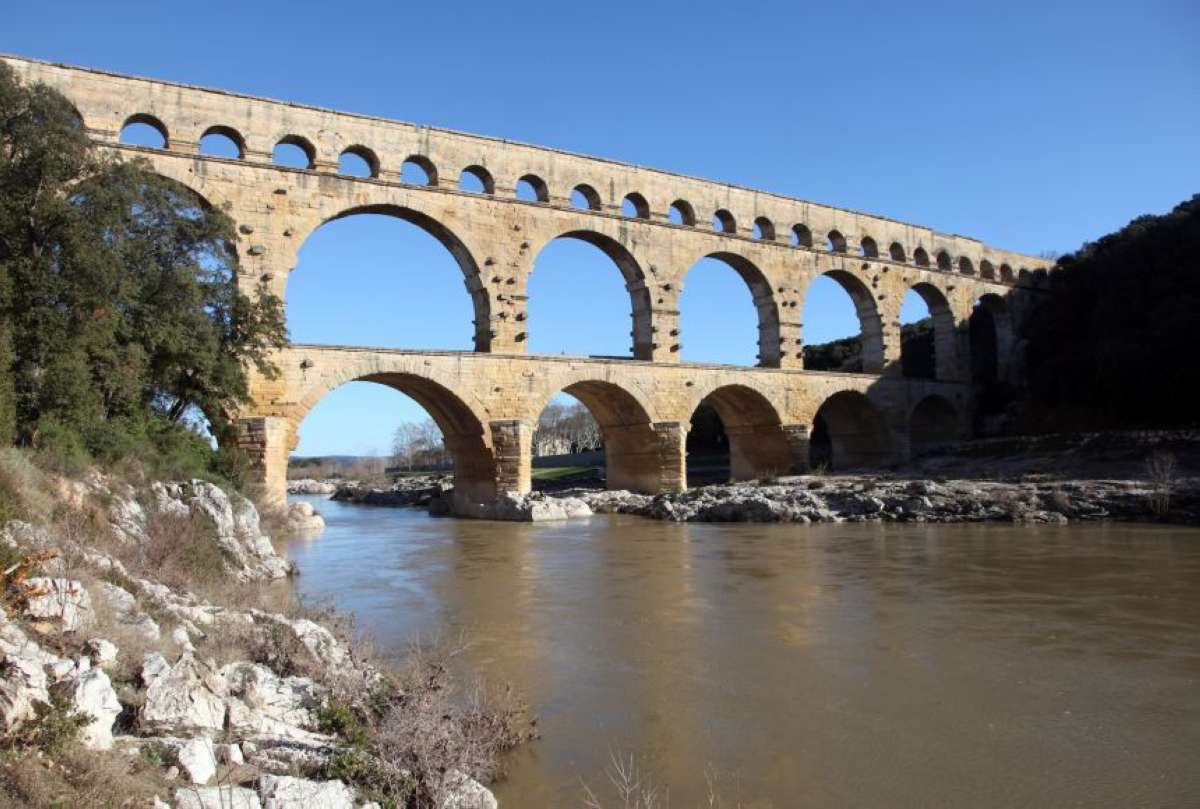The beginning of the art and activity of construction is lost in time immemorial because “constructing” is the oldest conscious activity of man after the one of gathering food.
The first “constructions” were of course the shelters that man has accomplished in order to protect himself against the elements of nature (cold, heat, wind, rain, etc.), against animals and even against his own kind.
The first shelters were natural ones (grottos, caves), “improved” by the action of man but where the natural configuration of the land did not make possible the existence of caves, man built shelters like “nests”, “huts”, “tents” etc. using materials that were readily available, such as: branches and leaves, clay, stone, ice (the “igloos” from the frozen areas).

Fig. 1.1 – Hut – shelter
The huts, for example (fig. 1.1), were built thousands of years ago according to principles that were, for the better part, kept and are being used nowadays as well, by peoples in the undeveloped areas of the planet.
Taking any form (conical, semispherical, cylindrical etc.), the huts were made by binding together wooden beams stuck into the ground and covering them with leaves, grass, animal skins, clay, etc.
The evolution of society, science and technology, allowed the passing, over approximately 6 – 7.000 years, from the shelter – hut to the modern, collective shelter of the “skyscraper” type, passing through many intermediary phases of volumetric, dimensional and form conception.
Therefore, using traditional materials (wood, stone, etc.) processed and combined with art, houses were built (family or collective ones) with more rooms with various functions, then the collective buildings of the “apartment house” type, built using classic materials and classic technologies (brick masonry, monolith concrete or prefabricated concrete), and nowadays very tall buildings, of the “tower” or “blade” type, built using materials with superior characteristics (steel, aluminum, glass, plastics etc.) and modern building technologies.

The shelter-buildings are the most widespread but represent only one of the functions that the existent constructions have, because the progress of society led, over the centuries, to a strong diversification of these functions.
In this way, the public constructions (administrative, of culture and art, sportive, religious etc.) appeared, for transports, industrial, agricultural, military, special, engineering etc. the execution and functionality principles of which have also evolved along with society.
Some of the antique buildings made by humans have resisted against the action of time for thousands of years because of their massiveness, because of the durability of the material of which they were made of (natural stone) and because of the applied execution technologies (technologies that are not completely known, some of them are only supposed).
Among the constructions that attest by their existence after millenniums since they were built, the art and skill of the ancient civilizations, the most representative are: – the pyramids, the aqueducts, the temples, etc.
– pyramids – monumental funerary constructions, built 2500-2700 years BC had the function of “houses for the afterlife” of pharos and kings of Egypt, Mesopotamia, Persia, India, Mexico, etc.

The most famous pyramids are those of Egypt, on the valley of the Nile, among which the highest is the pyramid of Cheops (148 m high, 232 m base side, approximately 6.5 million tons in weight).
– aqueducts – antique constructions made of stone (discovered in Italy, France, Spain, etc.) having the utilitarian function of water adduction, made under the form of arcades (generally with semicircular arches) rested on “piers” and developed on one or more levels.

– temples – religious constructions, with the symbolic function of “house” for god and worship place for its followers, made of stone, with the structure formed of walls, columns and systems of girders.

The temples (massive in ancient Egypt, or with more ample spaces in ancient Rome and Greece) constituted one of the most important architectural programs of antiquity because of the huge influence of religion over the antique people and, as consequence, because of the economic power of the religious system of all times.
The examples of constructions given above, famous through their architectonic value and their age, were and are still studied by many specialists (architects, engineers, archeologists, historians etc.) from the entire world, who elaborated a number of theories regarding the methods and technologies that were used for their construction and regarding the significations that can be assigned to the shapes and dimensions of these constructions.
But these are not the only types of constructions that became famous for their age and architectural value, because a number of objectives remained witness of human genius in the field of constructions, in the different parts of the planet and in different eras of development of the civilizations.
Therefore, there is a huge number of constructions spread in the entire world that illustrate the technique and art of some antique civilizations extremely developed, such as the civilizations from the Mediterranean Basin, Asia Minor, Extreme Orient, Latin America, etc.
In his work “Monumental constructions”, D. T. Constantinescu classifies the human significant constructions in three great “generations”, characterized by the types of the used structures, by the main execution technologies and by the main used materials, as well as by a great variety of architectonic styles.
If you liked this article, then please do share it on the Social Media. If you have a question or suggestion? Then you may leave a comment below to start the discussion.


